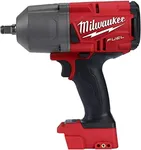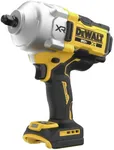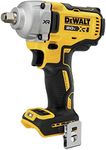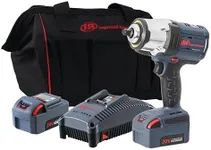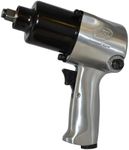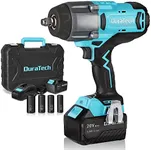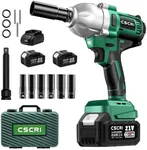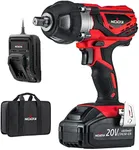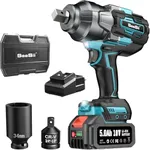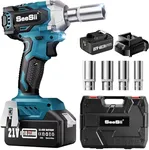Buying Guide for the Best Half Inch Air Impact Wrench
Choosing the right half-inch air impact wrench can make a significant difference in your work efficiency and comfort. This tool is essential for tasks that require high torque, such as automotive repairs and heavy-duty maintenance. To find the best fit for you, consider the key specifications that determine the performance, usability, and durability of the wrench. Understanding these specs will help you make an informed decision based on your specific needs and preferences.TorqueTorque is the amount of rotational force the wrench can apply. This spec is crucial because it determines the tool's ability to loosen or tighten bolts and nuts. Torque is measured in foot-pounds (ft-lbs). For light to medium tasks, a torque range of 200-400 ft-lbs is usually sufficient. For more demanding jobs, such as heavy-duty automotive work, look for a wrench with 500 ft-lbs or more. Choose a torque level based on the toughest job you expect to handle.
Speed (RPM)Speed, measured in revolutions per minute (RPM), indicates how fast the wrench can rotate. Higher speeds can make tasks quicker but may require more control. For general use, a speed range of 7,000-8,000 RPM is common. If you need to work faster or on more demanding tasks, consider a wrench with higher RPM. Balance your need for speed with your ability to control the tool effectively.
WeightThe weight of the air impact wrench affects how comfortable it is to use, especially for extended periods. Lighter wrenches (around 4-5 pounds) are easier to handle and reduce fatigue, making them ideal for frequent use. Heavier models (6 pounds or more) might offer more power but can be tiring to use for long durations. Choose a weight that you can comfortably manage for the length of your typical tasks.
Air Consumption (CFM)Air consumption, measured in cubic feet per minute (CFM), indicates how much air the wrench uses. This is important because it determines the compatibility with your air compressor. Most half-inch air impact wrenches require 4-6 CFM at 90 PSI. Ensure your air compressor can provide the necessary CFM to avoid performance issues. Match the wrench's air consumption with your compressor's output for optimal performance.
Noise LevelNoise level, measured in decibels (dB), indicates how loud the wrench is during operation. High noise levels can be harmful to your hearing and uncomfortable to work with. Wrenches typically range from 85-100 dB. For a quieter work environment, look for models with lower dB ratings. Consider using hearing protection if you choose a louder model.
DurabilityDurability refers to the wrench's ability to withstand regular use and harsh conditions. This is influenced by the materials used and the overall build quality. Look for wrenches made from high-quality materials like steel or aluminum and those with good reviews on longevity. If you plan to use the wrench frequently or in tough environments, prioritize durability to ensure a long-lasting tool.
ErgonomicsErgonomics involves the design of the wrench and how comfortable it is to use. Features like a comfortable grip, balanced weight distribution, and easy-to-reach controls can make a big difference in usability. Test the wrench if possible to see how it feels in your hand. Choose a model that feels comfortable and reduces strain during use, especially if you will be using it for extended periods.


